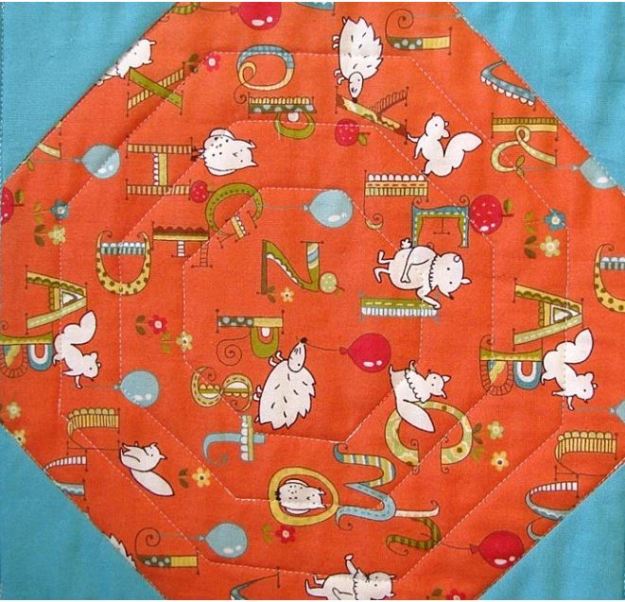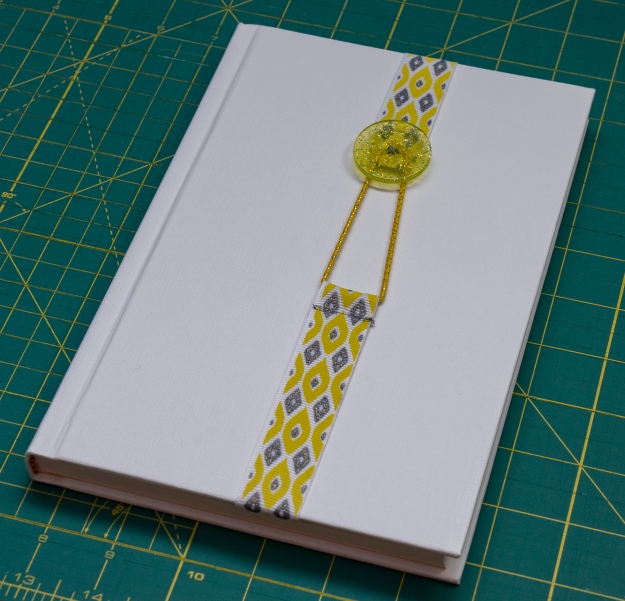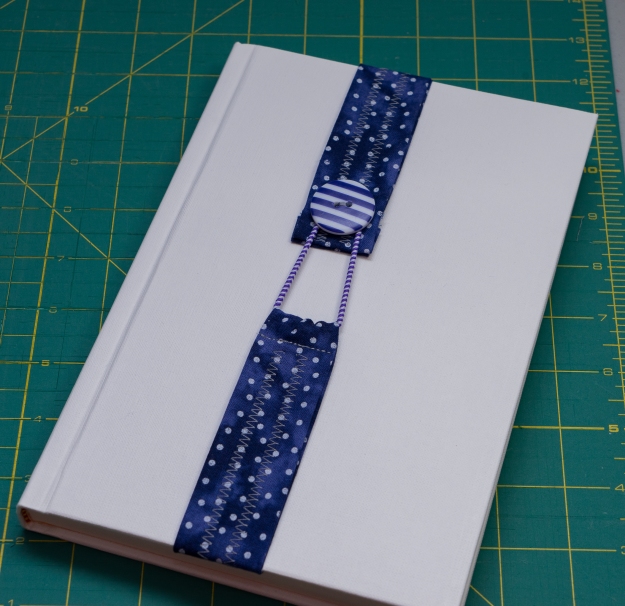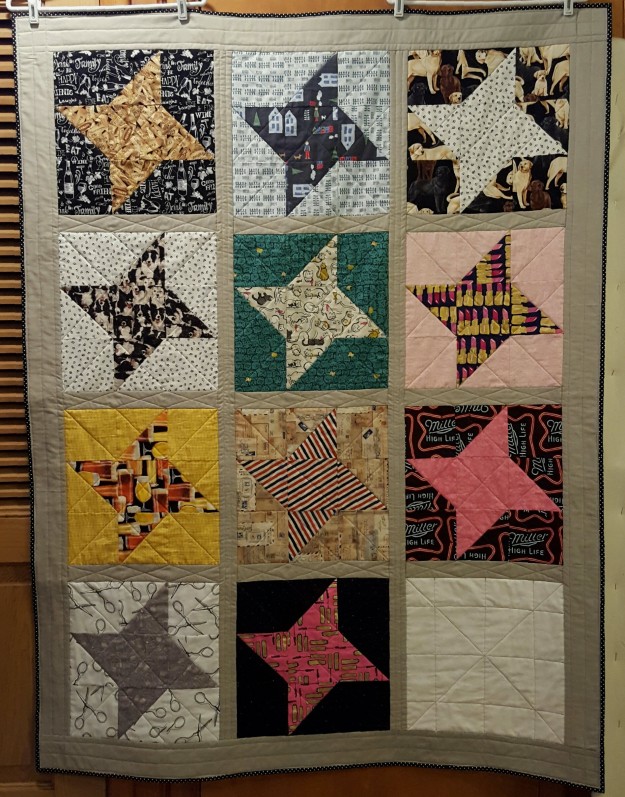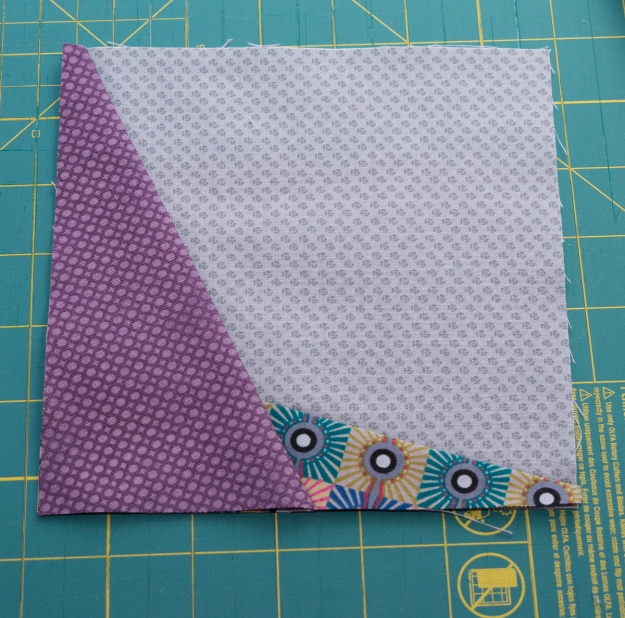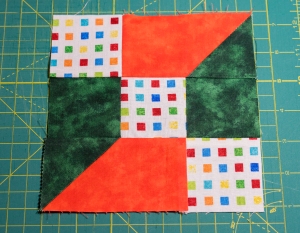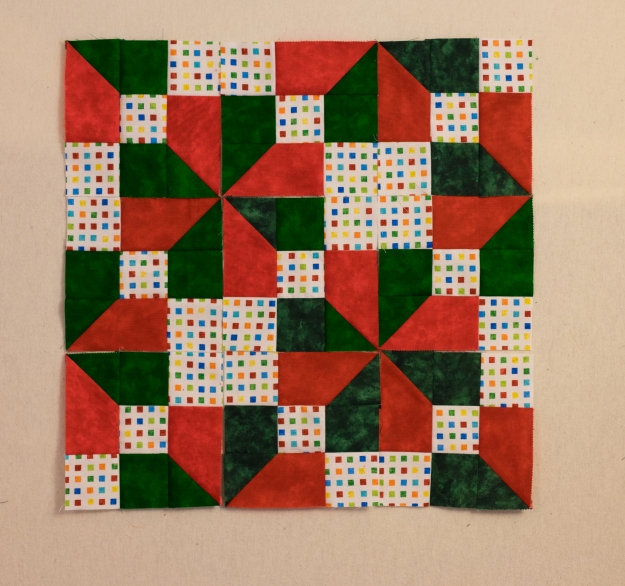I have been sick with a nasty virus folks, so my brain hasn’t been available to add part three of my posting. But antibiotics finally kicked in and I’m starting to function again, so on to the last posting on the quilting and binding of my Friendship Star quilt.
First, I want to talk about my challenge doing machine applique on the inside curves of a circle cut into the center of a rectangle block.
Now I’m no expert at applique in the first place; only doing it twice before and only on the outer edges of circles. So wrapping my mind around sewing down the inner edges of a circle cut into a rectangle was a bit challenging for some reason! You can see the “messy” result below.

Plus, my sewing machine allows me to choose “applique” stitches. The one above may also be known as a “blanket stitch” on other machines. My machine also allows me to do “mirror images” of stitches, so basically, I could choose the blanket stitch that makes a stitch falling to the left, reverse that and make the stitch fall to the right or vice-verse just by pressing a button. That makes life pretty simple, huh?

However I think I really just went too fast and lost control of my curves. I ended up missing some stitches and had to go around a second time. The stitches ended up looking more like a sunburst, with lines going out in random different angles instead of clean, more exact stitches as you would normally see on an outside curve. In the end, I was okay with this and considered it a “design element”, LOL.
However I just had to try it again on another sample after I had finished my quilt, which actually turned out better. So again, the key is keep your needle as close to the inside edge as possible, go slow, stopping after two or three stitches then lifting your presser foot to readjust the position of your block so you can keep moving around the curve.

The one above turned out better than the one in the quilt itself :).
Machine Binding a Quilt
I am not the best at hand sewing so I have always sewn my bindings on by machine. There are several good tutorials on how to do that, but I recently came across a new one that I tried and liked the result better than what I had been doing.
Normally, I was sewing the binding to the BACK of my quilt first, then to the front. This time I sewed it to the FRONT of the quilt first, and liked that even more. However, you have to feel VERY confident that you can sense, or feel where the folded over edge of the binding is falling in relation to the binding on the front (it has to fall past the stitching on the back) to know you are not accidentally sewing a very wonky seam or sewing into the front of the binding. It’s kind of scary because you can’t see whats happening on the front, but I found I could actually feel where I was and didn’t mess this up. Plus, if you are using a color of thread that matches the front of your quilt, it’s probably less scary. Here’s a link to an excellent tutorial on the Cluck Cluck Sew blog, a wonderful blog with great information and inspiration.
I always use 2 1/2″ strips for my binding. Below is a sample of what mine looked like. Because I already had some straight stitching in the border, this additional line of stitching did not look out of place in my opinion. So part of making the decision to bind in this manner might depend on what else is going on in your front borders, or the color of your thread and how much it might stand out.
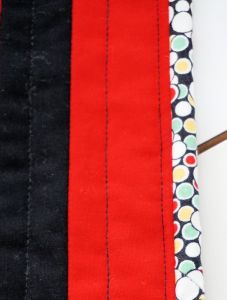
So that’s it for deconstructing this quilt to provide a little insight on my thought process behind designing and quilting this project. I hope it may give you some ideas and tips as well.



